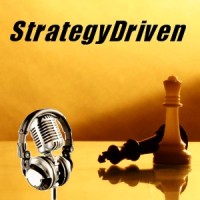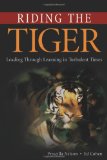Leadership Inspirations – Practice Makes Perfect

Roger Staubach
United States Naval Academy graduate, Heisman Trophy winner and legendary Hall of Fame quarterback for the Dallas Cowboys (1969 – 1979)

Roger Staubach
United States Naval Academy graduate, Heisman Trophy winner and legendary Hall of Fame quarterback for the Dallas Cowboys (1969 – 1979)
This series of articles explores the connection between relational leadership and employee retention. I discussed creating a ‘learning – thinking’ organization in the first article and a trusting organization in the following two. This final article examines creating a respected organization.
Respected organizations are often marked by the depth of esteem in which the community holds them. Because the community embraces the company, it produces a deep sense of pride in the employees. Community Marketing becomes strategic to a respected organization.
Relational Leadership is people-centric. People are defined in the relational diagram as employees, vendors, customers, and community. Many business plans leave out the community component or treat it lightly deeming it disconnected to the business purpose. Actually, a Community Marketing strategy helps define the business purpose and elevates the concept.
Figure 1: The Community Marketing Strategy
The relational diagram involves the entire spectrum of people. Just like the Building Blocks of Trust, you can’t skip a people component and be truly relational.
Hi there! This article is available for free. Login or register as a StrategyDriven Personal Business Advisor Self-Guided Client by:
Subscribing to the Self Guided Program - It's Free!
About the Author

(Course Technology PTR, Cengage Learning 2010). During his 36 year career, Frank has worked with many of the most recognized companies and executives in the world. He has provided consulting services for peers across the country and helped initiate Junior Achievement programs in Ireland, the Ivory Coast, Oman, the United Arab Emirates, Bahrain, and Uzbekistan. Frank was inducted into the Delaware Business Leaders Hall of Fame in October 2008, one of 38 individuals so honored and the first not-for-profit executive to receive this distinction in Delaware’s 300 year business history. To read Frank’s complete biography, click here.
For more information regarding this subject, visit Frank McIntosh at his website www.FJMcIntosh.com.

Special Edition 51 – An Interview with Priscilla Nelson and Ed Cohen, co-authors of Riding the Tiger examines what it takes to lead a thriving global organization through an Enron-like catastrophic event. During our discussion, Priscilla Nelson and Ed Cohen, co-authors of Riding the Tiger: Leading Through Learning in Turbulent Times, share with us their insights, personal experiences, and illustrative examples regarding:

Additional Information
In addition to the incredible insights Priscilla and Ed share in Riding the Tiger and this special edition podcast are the resources accessible from their websites, www.NelsonCohen.com and www.RidingTheTiger.com. Priscilla and Ed’s book, Riding the Tiger
, can be purchased by clicking here
.
Final Request…
The strength of our community grows with the additional insights brought by our expanding member base. Please consider rating us on iTunes by clicking here. Rating the StrategyDriven Podcast and providing your comments online improves our ranking and helps us attract new listeners which, in turn, helps us grow our community.
Thank you again for listening to the StrategyDriven Podcast!
About the Authors
Ed Cohen & Priscilla Nelson, partners at Nelson Cohen Global Consulting ( www.NelsonCohen.com), provide thought leadership and strategic guidance to leaders and companies around the world. They are co-authors of Riding the Tiger: Leading Through Learning in Turbulent Times (www.ridingthetiger.com) published by ASTD 2010.


Podcast: Play in new window | Download (Duration: 39:00 — 53.6MB)
Subscribe: RSS
The clock is ticking: next year, in 2011, the oldest of the 76 million Baby Boomers turn 65. While that has long been considered traditional retirement age, Boomers are known for bucking the system. Many will decide to stay in the workforce and replenish their savings and retirement accounts. But when they do leave, they will take with them years of institutional knowledge acquired on the job.
Workplace demographics paint a startling picture: Almost 40 percent of the U.S. workforce is between 45 and 64. Many business leaders are beginning to ask some tough questions: who will replace Boomers when they leave? Will younger workers have the knowledge and skills to run our organizations when they do? Companies in many industries stand to lose significant numbers of highly skilled, tenured workers. But that’s not all they’ll lose. After years on the job, Boomers have developed deep, often intuitive knowledge about their company’s way of doing business and the relationships that have made them successful – and much of that could be lost as they walk out the door.
Hi there! This article is available for free. Login or register as a StrategyDriven Personal Business Advisor Self-Guided Client by:
Subscribing to the Self Guided Program - It's Free!
About the Authors


For more information about Ball and Gotsill and Surviving the Baby Boomer Exodus (Course Technology PTR, Cengage Learning 2010), please visit their website www.survivingtheboomerexodus.com.

Hi there! Gain access to this article with a StrategyDriven Insights Library – Total Access subscription or buy access to the article itself.
| Subscribe to the StrategyDriven Insights Library
Sign-up now for your StrategyDriven Insights Library – Total Access subscription for as low as $15 / month (paid annually). Not sure? Click here to learn more. |
Buy the Article
Don’t need a subscription? Buy access to Organizational Performance Measures Best Practice 14 – Run New and Old Performance Measures in Parallel for just $2! |
